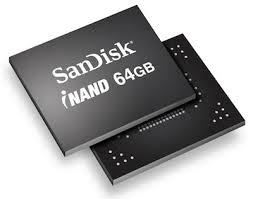This article introduces what Flash Memory is, and it also displays the types of flash card, the technical features, supplementary instruction, its advantages and disadvantages.
Flash memory is a kind of nonvolatile memorizer. It can ensure the data safety even in case of power outages. Flash memory is a variant of EEPROM (Electrically Erasable Programmable Read-Only Memory). Most of the flash memory’s chips need the block-erasing but the chips of EEPROM can be deleted or rewritten in the unit of byte. Due to the feature of saving data when a power outage occurs, flash memory can be used to keep the setting information.
Unlike RAM which can rewrite data in bytes, flash memory cannot replace the RAM. Flash card is a memorizer that adopts flash memory technology to store electronic information. It is commonly used in small digital products (like digital cameras, PDA, MP3, etc) as a storage medium.
Types of Flash Card
According to different manufacturers and applications, flash memory cards can be divided into SM card, CF Card, MMC Card, SD Card, Memory Stick, XD Picture Card and micro drive. Though different in appearance and specification, these cards share the same technical principles.
SD card is a popular type of flash card, so you may as well read the SD card recovery to know how data recovery on memory card is completed with ease.
Technical Features
Big differences lie in NOR and NAND flash memory. The former one looks more like flash memory which has a separate address wire and data cable. This kind of flash memory is expensive in price, but small in capacity. The later one owns many characters we can find on a hard disk. Its address wire and data cable are merged in an I/O line. What’s more, it has more advantages in cost and capacity.
NOR flash memory is suitable for the occasion (like the mobile phone’s operation environment) that needs random reading and writing at frequent speed. And it is often used to store the program codes which directly run in the flash memory. Digital memory cards like flash drives and digital memory cards often use NAND flash memory to save data.

What’s more, the speed of the flash memory is limited. And it’s operating speed and frequency is much lower than the internal memory. The low operation efficiency of NAND flash memory is closely related to its architecture and interface design. The operations and features are quite similar with that in hard disk: operation speed on small block is slow, and operating speed on large block is fast.
Characteristics of flash memory include fast access speed, no noise and small heat dissipation. Users who ask for low disk capacity can buy flash memory card. Instead, if you have high requirements on capacity, purchase hard disk which is much cheap per gigabyte.
When precious files like photos are lost from a flash memory card, you must take action to recover photos from the memory card without any delay.
Supplementary Instruction
1. NAND Flash Memory
Bit is the fundamental memory cell of internal memory and NOR flash memory, and users can make random-access to any bit. However, the NAND flash memory’s fundamental memory cell is page. The available capacity of each page is integer multiples of 512 bytes. The so-called effective capacity refers to the data area plus 16 bytes parity information.
NAND flash memory often does the erase operations in the unit of sector. Writing data into flash memory must be performed in the blank space. If there is some data in the target area, you must do erase before writing. Therefore, the erase operation is the basic operation of flash memory.
While addressing, the NAND flash memory uses 8 strips of I/O interface data cable to transfer the address information packet. And each packet can transmit eight bit addressing information.
NAND address information should include address (the initial operation address in webpage), block address and the corresponding page address. When transferring, it will be respectively grouped, which needs at least three times and occupies three cycles.
With the increase of capacity, address information will be more. And it will take more time to do transmission. Therefore NAND flash memory capacity has an important feature that the larger the capacity is, the longer time the addressing needs. Moreover, since the delivery address period is longer than that of other storage medium, the NAND flash memory is not suitable to accept the request of reading and writing small capacity.
2. PCIe Flash Memory Card
PCIe flash card owns bigger capacity and faster speed than the daily used USB flash drive. It adopts the flash memory chips which have the feature of low-power dissipation and high performance to utilize the applications. It is directly inserted into the server, so the time used to receiving information will be greatly saved.
Compared with Hard Disk
In terms of storage medium (especially in the aspect of transmission speed and seismic reliability), flash memory is better than hard drives.
Advantages of Flash Memory
1. Small in size (but not in low integration level).
2. Anti-seismic and anti-tumble.
3. The flash memory can provide faster data reading speed, and the hard drive is limited to the rotational speed.
4. Storing data in safe state, and reasons are as follows:
- Moving the flash memory will not affect its reading and writing speed due to the mechanical structure.
- The service life of hard disk will be affected by reading and writing frequency while flash memory is almost not influence by these factors.
- Flash memory uses voltage to write data, so the data will not be eliminated. And it will be kept in a long run.
- Lighter in weight.
Disadvantages of Flash Memory
- The material is expensive, so the unit capacity is not cheap.
- Read and write speed is relatively slow.